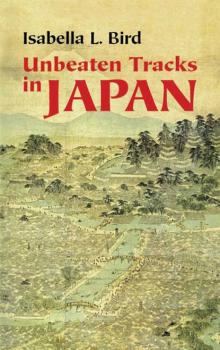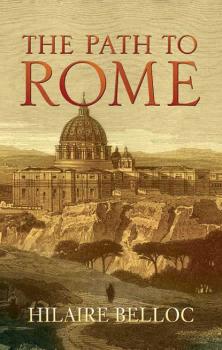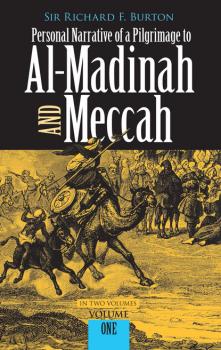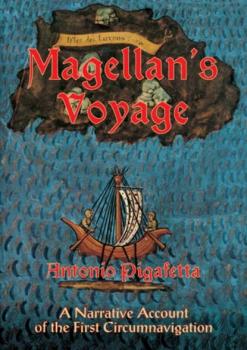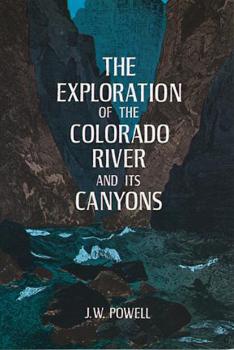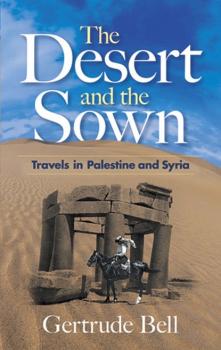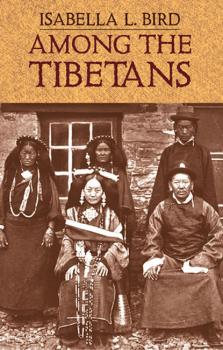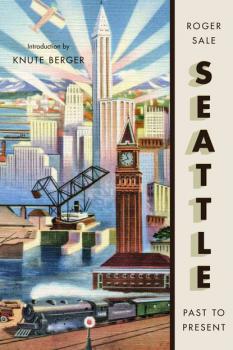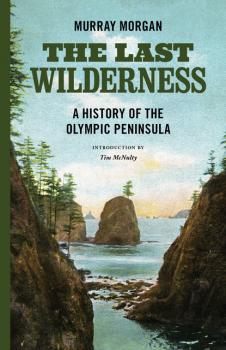Книги о Путешествиях
Различные книги в жанре Книги о ПутешествияхUnbeaten Tracks in Japan
The daughter of a country parson, Isabella Bird was advised to travel for her health. Bird's compliance with her doctor's orders took her to the wildest regions of the American West, Malaysia, Kurdistan, Persia, the Moroccan desert, and China, among other places. One of nine popular accounts of her adventures around the world, Unbeaten Tracks in Japan traces the intrepid Victorian explorer's 1878 excursion into the back country of the Far East.Japan had just opened its doors to the West within the past decade, and Bird traversed regions unknown to many of the island nation's inhabitants. Traveling more than 1,400 miles by pack horse, rickshaw, and foot, she followed winding mountain trails and crossed countless rivers to meet villagers in their remote communities and peasant farmers in their fields. In poignant, vivid letters to her sister and friends, Bird describes the vicissitudes of her journey–the discomforts and difficulties as well as the pleasures and excitement of discovery. 40 of the author's own sketches and photographs illustrate her captivating stories.
The Path to Rome
Hilaire Belloc's best work — according to the author, as well as most critics — The Path to Rome is less concerned with Rome itself than with a pilgrim's journey to the Eternal City. A spirited Catholic apologist, Belloc traveled on foot from Toul (near Nancy), France, and crossed the Alps and the Apennines in order to, in his words, «see all Europe which the Christian Faith has saved.» Afterward, he turned his pen from his usual polemics to literature, and related in finely crafted prose his myriad experiences with the people he met along the way, as well as his reflections on tradition, politics, landscape, and much else. Throughout, the work abounds in Belloc's inimitable wit and good humor, and displays his profound love for the land, his faith, and his fellow man.
Personal Narrative of a Pilgrimage to Al-Madinah and Meccah, Volume One
Impelled by wanderlust and the spirit of adventure and aided by an extraordinary facility in Eastern languages, Sir Richard Burton (1821-90) was one of the great traveler-explorers of history. He was the first European to enter the capital of Somaliland and the first to discover the Great Lakes of Central Africa. He was also an Orientalist of the first rank.But it is for his pilgrimage in 1853 to Mecca and Medina and the most sacrosanct shrines of Islam that Burton is best known — and for his celebrated book that recorded his experiences during the journey. Successfully posing as a wandering dervish, he gained admittance to the holy Kaabah and to the Tomb of the Prophet at Medina and participated in all the rituals of the Hadj (pilgrimage). He is still one of the very few non-Moslems to visit and return from Mecca.Above all, Burton was a sharp observer — of character, customs, and physical surroundings. These pages contain a treasury of material on Arab life, beliefs, manners and morals; detailed descriptions of religious ceremonies, mosques, temples, etc.; and a variety of ethnographic, economic, and geographical information. Whether telling of the crowded caravan to Mecca, engaging in minute analysis of Bedouin character, waxing lyrical about a desert landscape, or reporting conversations with townsfolk or fellow pilgrims, Burton gives us a vivid picture of the region and its people.Along with his thorough familiarity with the cultures and languages of the Middle East, Burton exhibited a resourcefulness and presence of mind that were to serve him well along the way. These qualities saw him through many a taut situation in a country where violence was easily kindled. And they permitted him to get to and into places a man with less enterprise would never have dreamed of going.This book’s value to historians of culture and religion, Orientalists, and other scholars is obvious. Yet it is as a great classic of travel that it has attracted such a wide audience. Burton’s highly personal style, vigorous opinions, and his matter-of-fact humor against a backdrop of constant hazard and possible exposure have delighted tens of thousands of readers for more than a century. This reprint gives today’s readers an opportunity to enjoy this unique work.
Magellan's Voyage
In 1519, Ferdinand Magellan, leading an expedition of five ships and over 270 men, set sail from Spain in search of the Spice Islands. Three years later, one ship returned to port with just 18 men. Magellan was not among the survivors, having been killed in the Philippines. But the remainder of his party, quite inadvertently, had been first to circumnavigate the world.One of the survivors of the voyage was Antonio Pigafetta, a young Italian nobleman and volunteer member of the crew. His diligent and detailed accounting of the expedition is the fullest, most valuable narrative of the voyage and one of the most important geographical documents known. As R. A. Skelton observes in the Introduction, Pigafetta “brought to his task of recording a capacity for keen observation, sympathetic interpretation, and expressive communication of experience, which enabled him to produce one of the most remarkable documents in the history of geographical and ethnological discovery.” Fortunately for us, Pigafetta recorded “all the things that had occurred day by day during our voyage.”In addition to naval and military battles and maneuvers, Pigafetta faithfully documented plants and animals, manners and customs, languages and geography of lands and seas never before seen by Europeans. What Magellan and his party did, and what Pigafetta saw and recorded so well, forever changed our concept of the world and vastly enlarged our knowledge of it. This remarkable narrative brings that epochal event vividly to life. R. A. Skelton, who prepared the excellent translation and commentary, was formerly on the staff of the British Museum.
The Exploration of the Colorado River and Its Canyons
The time is 1 p.m., May 24, 1869. The place: the Green River portage, in present-day Wyoming. The personnel are ten: Major John W. Powell, one-armed Civil War veteran, later head of the U. S. Geological Survey) and nine geologists, geographers, scouts, and adventurers. Their assignment: to fill in the last white space on the map, to explore the last great unmapped and unknown part of the continental United States.No man has ever descended the Colorado River — some 1,000 miles cut through impassable badlands. It is known that there are other rivers in the area, like the Dirty River and the Grand River, but their interrelationships are unknown. What lies along the course of the Colorado as it flows between cliffs 5,000 feet high on either side? Some say that there are waterfalls that dwarf Niagara; others that there are impassable rapids; others that the river flows underground; others say that it is a smooth placid stream, lined by horizon-reaching fields of wild wheat. No one knows, not even the Indians.Major Powell wrote the account of this remarkable expedition, and his narrative is one of the great classics of exploration, as thrilling as the feat itself. As we follow Powell's journal (expanded for publication), we find the ten men sailing through wild waters, momentarily expecting rapids around the next bend; and finding rapids, throwing out drag anchors, while one advanced boat tries to find through-flowing channels. We see mutiny, as three men refuse to face the perils any longer and desert — to be massacred by the hostile Indians. Famine — the beans are sprouting, the apples are fermenting, and the flour has gone moldy. Yet six men finally emerged, after 95 days of peril and a new continent of experience was recorded.This is the only uncut version of Powell's narrative that has been printed in the many years. It even includes the full text of the later 1870 expedition along the Uinta, where Powell rediscovered the Pueblo Indians. It also contains Powell's later reflections on the expedition, omitted in other editions.
The Desert and the Sown
Born to transcend the social constraints of Victorian England, Gertrude Bell left the comforts of her privileged life for the unconventional — but thrilling — world of the Middle East. One of the first women to graduate from Oxford, she traveled to Persia and became passionately drawn to the Arab people, the language, and their architecture. A skilled archeologist, historian, and linguist, Bell traveled the world and wrote compelling, perceptive accounts of her daring journeys. The Desert and the Sown is considered to be one of her masterpieces. A magnificent account of personal discovery and political history, this intriguing narrative traces Bell's 1905 sojourn through Lebanon, Syria, and Palestine. With an eye for vivid detail, «the female Lawrence of Arabia» offers intriguing images from her often dangerous «wild travel» through regions never seen by another foreign woman. One hundred sixty extraordinary photos illustrate camel caravans; ruins of castles and monasteries; local markets and bazaars; Damascus with its gardens, domes, and minarets; and more. But it's Bell's impressions and conversations with contacts and confidantes of varied cultures that will hold you captive. An inspiring portrait of a woman who overcame the barriers of her generation, as well as a piece of history that offers insight into current events in the Middle East, The Desert and the Sown is fascinating reading for travelers, explorers, and citizens of the world. The book also served as the basis for the 2016 Werner Herzog film Queen of the Desert, starring Nicole Kidman, James Franco, and Robert Pattinson. Map included.
Among the Tibetans
Bird (1831-1904) recounts her rugged passage through the Himalayas by horseback and her four-month sojourn amid «the pleasantest of people.» Bird's evocative accounts of Tibetan ceremonies, decorations, costumes, and music, along with her vivid descriptions of palaces, temples, and monasteries, offer rare glimpses of a vanished world. 21 black-and-white illustrations.
A Tramp Abroad
The success of Twain's first collection of travel memoirs, The Innocents Abroad, inspired a return to Europe for another look at some of the countries and landmarks that initially dazzled the author and his companions. In A Tramp Abroad, Twain's abundant humor waxes as freely as ever; this time, however, his amusement bears a more cynical cast, as he regards the grand tourist sights in Innocents through older and more experienced eyes. The seriousness of the author's second impressions provides an interesting subtext to the overall jocularity of his narrative, making this volume a milestone in the Twain oeuvre and a must for his legions of admirers. Appendix.
Seattle, Past to Present
Roger Sale’s Seattle, Past to Present has become a beloved reflection of Seattle’s history and its possible futures as imagined in 1976, when the book was first published. Drawing on demographic analysis, residential surveys, portraiture, and personal observation and reflection, Sale provides his take on what was most important in each of Seattle’s main periods, from the city’s founding, when settlers built a city great enough that the railroads eventually had to come; down to the post-Boeing Seattle of the 1970s, when the city was coming to terms with itself based on lessons from its past.Along the way, Sale touches on the economic diversity of late nineteenth-century Seattle that allowed it to grow; describes the major achievements of the first boom years in parks, boulevards, and neighborhoods of quiet elegance; and draws portraits of people like Vernon Parrington, Nellie Cornish, and Mark Tobey, who came to Seattle and flourished. The result is a powerful assessment of Seattle’s vitality, the result of old-timers and newcomers mixing both in harmony and in antagonism.With a new introduction by Seattle journalist Knute Berger, this edition invites today's readers to revisit Sale’s time capsule of Seattle—and perhaps learn something unexpected about this ever-changing city.
The Last Wilderness
Murray Morgan’s classic history of the Olympic Peninsula, originally published in 1955, evokes a remote American wilderness “as large as the state of Massachusetts, more rugged than the Rockies, its lowlands blanketed by a cool jungle of fir and pine and cedar, its peaks bearing hundreds of miles of living ice that gave rise to swift rivers alive with giant salmon.”Drawing on historical research and personal tales collected from docks, forest trails, and waterways, Morgan recounts vivid adventures of the area’s settlers—loggers, hunters, prospectors, homesteaders, utopianists, murderers, profit-seekers, conservationists, Wobblies, and bureaucrats—alongside stories of coastal first peoples and striking descriptions of the peninsula’s wildlife and land.Freshly redesigned and with a new introduction by poet and environmentalist Tim McNulty, this humor-filled saga and landmark love story of one of the most formidably beautiful regions of the Pacific Northwest will inform and engage a new generation of readers.
